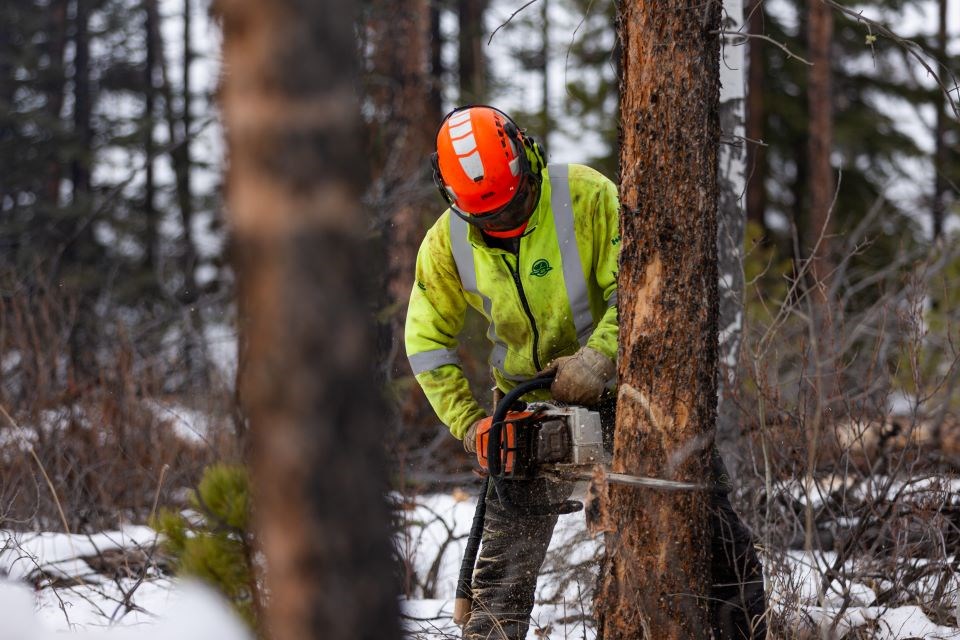Winter is the season of wildfire risk reduction work, and it’s a busy season at that.
Katie Ellsworth, fire management officer in Jasper National Park, said it might seem busier than usual if only for the fact that there are fewer hands on the fire crews than normal.
“Not that we're short-staffed. I think the rigors of the summer left people who normally would accept an extension to prefer to have some time off. We're down to a smaller crew than typical, so that of course limits our ability to really move a lot of projects forward.”
The crew has finished brushing and clearing out a significant portion of the work on the community fire guard along the Cabin Lake fire road closer to the water treatment facility. That is the first of three check marks on their to-do list.
“That's all completed,” Ellsworth said. “They burned some piles that were left in there from previous years, and then they went out and they worked around Alpine Village.”
The second check mark involved the typical risk reduction treatment to protect the outlying commercial accommodation starting in December. The “smoke in area” signs are still up as Highway 93A crosses where the Miette River meets the Athabasca River.
The last major bit of business still to come involves putting in helipads along the Signal Mountain Fire Guard that Ellsworth’s team worked on last year.
“Weather's really been a thing for us this year,” she said. “They will be working when the weather is suitable.”
Tuesday’s wind did bring a fire warning in the Edson Forest Area, but that wasn’t a serious issue in Jasper.
Locally, the problem revolves around the level of precipitation, low humidity and warm temperatures. Ellsworth is keeping a constant eye on the situation. Most wildfires are the result of lightning, which isn’t a usual threat this time of year.
Winter wildfire risk reduction work will continue until the start of the wildfire season proper, which is March 1.
“In Jasper, we have a real microclimate like everyone knows: it’s quite variable,” Ellsworth said.
“Hinton and Edson at the beginning of March will often be in a really dry, crispy condition, and we'll still have snow on. Like earlier this season, they had snow, and we didn't, so it's quite variable.”
Another factor that differentiates Jasper from those two communities is industry. There is a lot of logging and a lot of oil and gas installations out there, and they do a lot of pile burning.
Any burn permits that Parks Canada issues have a list of conditions, including a minimum of five centimetres of snow on the ground. If the wind is excessive, burning requests are denied.
Tuesday’s high was expected to go to approximately 14 C. There has been a lot of melting of the very modest amount of ground snow cover as well.
“That's how we mitigate a lot of that risk. We just don't have the same level of risk that [Hinton and Edson] do. There's no snow,” Ellsworth said.
“We're always wondering what's coming, and the weather is the biggest dictator of that for us, really.”



